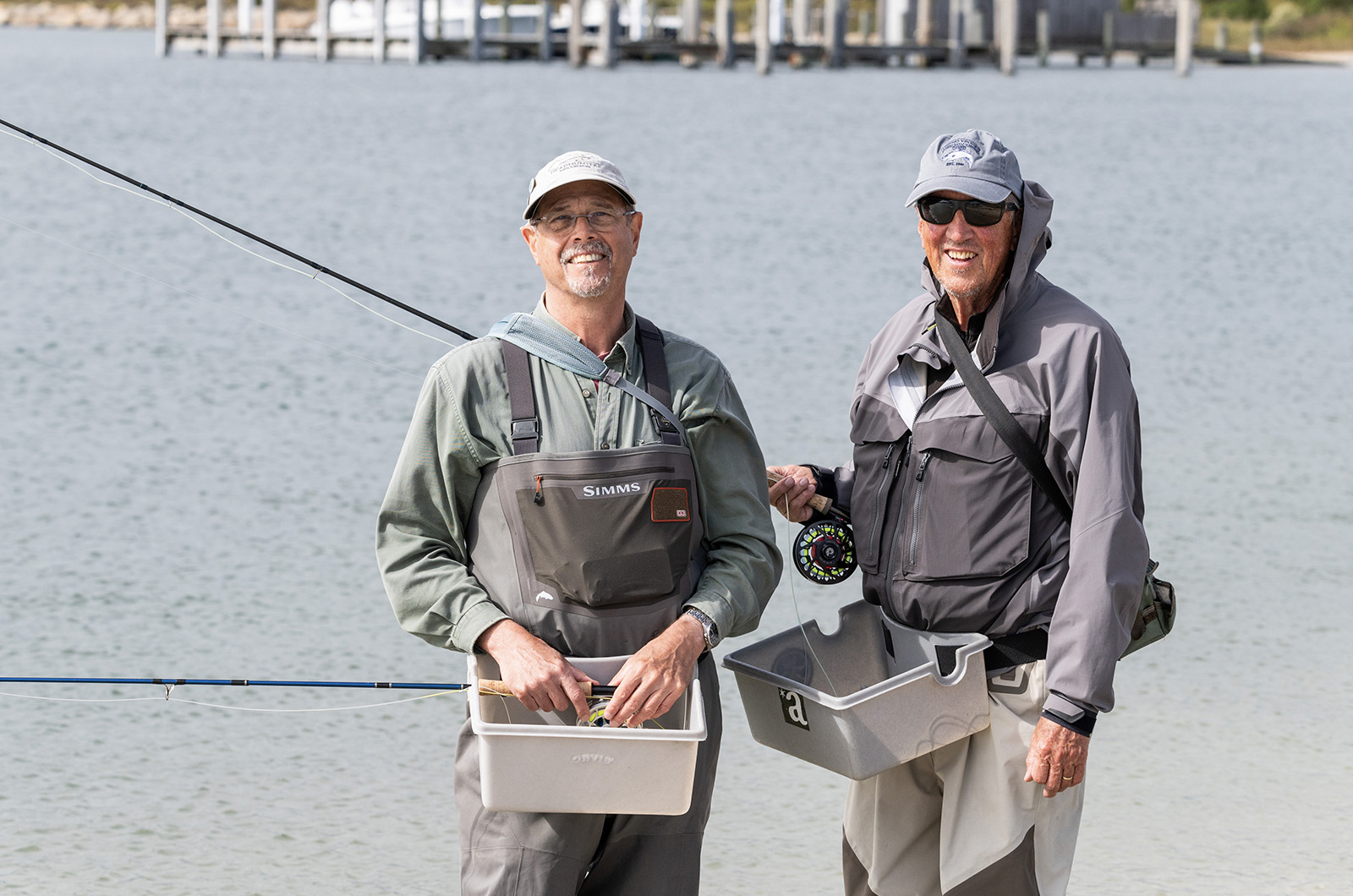While fly fishing may represent a small percentage of derby anglers, the participants definitely stand out along the shoreline.
“Fly fishing is very visible because it’s a pretty thing to look at,” said Wilson Kerr, a member of this year’s Striped Bass and Bluefish Derby committee. “When you see someone fly fishing and they cast well, it catches people’s eye.”
According to Mr. Kerr, about 10 per cent of the derby’s registrants are signed up for the fly rod division this year.
Abbie Schuster, of Kismet Outfitters in Edgartown, spends most of the tournament teaching other anglers the mechanics of fly fishing. She said the sport is on the rise across the country.
“It’s definitely getting more popular. Out west, like in Montana, it’s all fly fishing in the rivers. Saltwater fly fishing is growing immensely every single year,” she said, in between casts of her rod, standing in the waters of Chappaquiddick.
For many fly fishers, the sport starts long before they cast. Fly tying, the art of creating a lure that usually resembles an insect or other food source, is a common practice for many anglers.
Colin Cournoyer has been fly fishing for over a decade and creates his own flies. He has fished for years, but said he took up fly fishing because it was more challenging and more of an art form.
“I tie a lot of everything. Some of the ties that I like to tie in spring and summer imitate crabs, which are some of my favorite,” he said. “And during the derby, one of my favorite things to tie is an epoxy minnow.”
Anglers choose which flies to use based on a number of factors, including time of day and the typical food source of the target fish.
“The big thing is color,” Ms. Schuster said. “At night, I’m using a dark color, pink or red or black, so they can only see the silhouette. During the day, I’m using bright colors...False albacore and bonito love green and pink, so I use a lot of green and pink.”
The choice of fly also impacts the way it is tied. When Ms. Schuster uses a Clouser, which resembles a minnow with red eyes and a spray of olive hairs, she ties it loosely to give it more natural movement once it lands in the water. When she uses a fly that imitates a crab, she will tie it more tightly.
Once the fly is tied, Ms. Schuster pulls, or “strips,” some of the fishing line from the reel. Unlike line used in other types of fishing, fly fishing line is weighted. The end of the line is heavier to help the fly sink beneath the surface.
Once the line is pulled, Ms. Schuster is ready to cast.
“You shake the rod’s hand, so your thumb is right on top, so now your wrist is like nonexistent. It’s almost like you’re in a cast, God forbid,” she explained.
Using her elbow and shoulder, she arced the rod back and forth to gain momentum.
“Because you’re letting a little line out every forward pass, for your back pass you have to wait longer,” Ms. Schuster said. “It’s not a consistent move — back, stop, forward, stop — and you’re waiting for all that line to go out...You find this really beautiful, therapeutic vibe, which is why I think people do it.”
When the fly hits the water Ms. Schuster lets it sink for a few seconds before she begins stripping the line back towards herself. This is when fish will usually bite because the movement imitates bait in the water.
“Once you hook with a fly rod, it feels like you’ve hooked onto a pickup truck,” said Mr. Kerr. “You think this fish is so strong, I can feel it’s tail beating. I can feel every movement of this fish.”
He added that because the reel on a fly rod is delicate, the act of catching the fish feels more personal.
The connections made through fly fishing, not just between angler and fish but between the anglers themselves, is another facet of the sport that many highlight as a special part of the experience.
“It’s a tight-knit community of unbelievably creative people, people who tie their own flies, who build their own rods, people who have their own techniques and styles of how to get it done,” said Mr. Cournoyer. “They’re always so willing to share with people who are struggling, even though it’s a competition. At the end of the day, it’s all about the memories you make.”
Ms. Schuster acknowledged that because of her gender she stands out in a male-dominated field. However, she feels that the community is becoming more welcoming.
“It’s a slow change, to be honest,” said Ms. Schuster. “But there’s also a really supportive group of people, and supportive bad ass women, that make this industry amazing.”









Comments (1)
Comments
Comment policy »